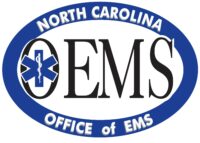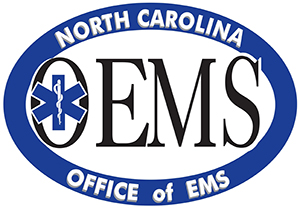he Emergency Medical Services (EMS) Training Coordinator is responsible for analyzing, planning, designing, implementing, and administering EMS programs as well as other department-wide and community-oriented programs. These include Advanced Life Support (ALS), Basic Life Support (BLS), Continuous Quality Improvement (CQI), Peer Review, problem resolution, and certification and recertification of both EMS instructors and providers. In addition, this class is responsible for evaluating EMS training activities for effectiveness, with an emphasis on its impact on department service delivery.
Other duties include:
evaluating EMS data, identifying methods of providing effective emergency medical care, identifying methods to correct complex medical issues and patient care delivery situations, and designing quality assurance programs to measure program outcome and effectiveness. The EMS Training Coordinator conducts research and analysis of current and future EMS issues and trends to ensure quality medical services. The EMS Coordinator assists the Division Chief in accomplishing established overall organizational goals through program management, provider and system evaluation, and quality assurance. An employee in this class also serves as a liaison between the Department, hospitals and other outside agencies. The EMS Training Coordinator must be an effective instructor who is capable of conducting training activities and classroom instructional sessions as needed. This class is also responsible for performing related duties as required.
Distinguishing Features:
General supervision is received from the EMS Division Chief who reviews work through conferences and overall results achieved. This class is FLSA exempt administrative.
Qualifications:
Any combination of training, education, and experience equivalent to graduation from an accredited college or university with an associate’s degree from an accredited institution in Nursing, Education, Fire Science, Emergency Medical Services, or related field. Extensive (5+ years) experience in the medical profession, which must include experience as a Paramedic; Certification as a provider in Cardiopulmonary Resuscitation (CPR), Advanced Cardiac Life Support (ACLS), Prehospital Trauma Life Support (PHTLS) or International Trauma Life Support (ITLS), and Pediatric Life Support (PALS) or Pediatric Education for Pre-Hospital Provider (PEPP).
Special Requirement(s):
Must possess a valid North Carolina Driver’s License by hire or promotion date. Must maintain current status as a Paramedic. Must possess and maintain Instructor Certifications for CPR, ACLS, PHTLS/ITLS and PALS/PEPP, and Paramedic within one year after hire date (by assignment). The employee must maintain certification as a NCOEMS Level II Instructor – Paramedic in the State of North Carolina. (Applicants have 1 year to complete this requirement.) Preferred/Desirable Qualification(s) A minimum of 2,000 documented hours of teaching experience is preferred, applicant who holds certifications as Nationally Registered Paramedic, Critical Care Paramedic, Hazardous Materials Level II (Operations), Emergency Management Coordinator, Rescue Technician with applicable upgrades, Fire/Rescue Instructor, EVD Instructor, ICS Instructor and/or additional leadership training and certifications highly desirable.
ESSENTIAL FUNCTIONS
Communication: Communicates with the public, Fire Department employees, other City and County departments and management, medical control authorities, and product or service vendors to identify problems or areas of improvement and to coordinate the implementation of solutions. Also communicates with citizens, field personnel, and other customers to identify and resolve EMS issues. Contacts local, regional, and state medical direction authorities, hospital and ambulance supervisors to develop and implement EMS procedure and policies. Communicates with other EMS staff regarding projects or training. Conducts effective presentations and training in classroom and professional settings. Produces written documents, such as policies, procedures, proposals, activity reports, evaluations, training documents, and other documents with clearly organized thoughts using proper sentence construction, punctuation, and grammar in order to communicate clearly and effectively.
Manual/Physical: Demonstrates and performs CPR and other emergency medical care as needed. Also demonstrates and performs BLS and ALS procedures within the scope of practice of the incumbent’s license or certification. Rides along on emergency vehicles during emergency calls to evaluate EMS services under emergency scene conditions. Operates a department vehicle requiring a minimum of a standard North Carolina Driver’s License to travel to and from training sites. Assembles packets, manuals, reports, and updates for management and other presentations. Sets up public information displays, health fairs, and other events, which includes setting up chairs, tables, display exhibits, and similar items. Moves objects weighing up to 75 pounds with the aid of a standard moving device such as a cart, hand truck, etc. including CPR manikins, computer simulators, and other training materials and equipment for distances of up to 150 feet. Enters data or information into a personal computer to record activities, review and interpret data, and prepare correspondence. Prepares and updates training schedules, attendance summaries, graphs, call volumes, etc. Listens to radio traffic and patch tapes to monitor the quality of emergency medical services and compliance with the Department Standard Operating Guidelines (SOGs). Reviews training sources (written, audiovisual, and computer software). Uses visual aids, such as overhead transparencies, presentation software, and slides when giving presentations or instructing classes. Operates a variety of standard office equipment such as a personal computer, copy machine, telephone, and other equipment to communicate and document necessary information and activities. Meets scheduling and attendance requirements.
Mental: Observes changes in the medical technology, patient care delivery, and other health care issues, and plans for the impact to the department’s service delivery. Performs mathematical calculations, statistical computations, financial and cost analyses, etc. Projects costs of personnel, materials, equipment, and instructors for program needs for budget purposes. Understands and interprets schematic drawings and emergency call summaries to critique medical and patient care. Prioritizes own work projects and may assign work to other unit personnel. Conducts needs assessments, develops lesson plans prepares instructor and student materials, coordinates training efforts, and evaluates program efficiencies (by assignment). Learns job related material through on the job training, structured presentations, and meeting with state and local regulatory agencies.
Knowledge and Abilities: Knowledge of: theories, principles, and techniques used to facilitate adult learning; project planning and execution principles and methods; principles of health care delivery systems and emergency medical services; methods of conducting research studies or medical investigation; medical/legal issues related to the delivery of EMS; federal, state and regional standards of care; ethical aspects of emergency medical care; pathophysiology, assessment, and management modalities of medical conditions and diseases common to adults and children; process of disease transmission and infection control; and kinematics, assessment, and management modalities of trauma.
Ability to: plan, coordinate, and execute large public events or training programs; recognize and identify potential medical/legal risk situations; develop and implement long and short-range goals and objectives; observe and evaluate trends; explain technical medical concepts and practices in simple nontechnical language; represent the Department or County at meetings with local, state, and regional medical direction authorities; coordinate medical follow-up as needed with infectious disease exposures; coordinate and teach ACLS, PALS/PEPP, CPR, PHTLS/ITLS and other certification courses; direct other staff members, contracted personnel, or presenters; and establish and maintain effective working relationships with management, coworkers, and representatives from hospitals.
The duties listed above are intended only as general illustrations of the various types of work that may be performed. Specific statements of duties not included do not exclude them from the position if the work is similar, related, or a logical assignment to the position. Job descriptions are subject to change by the Department as the needs of the Department and requirements of the job change.
Certification Level: Paramedic
County: Caldwell
Closing Date (if any): 10/01/2024

